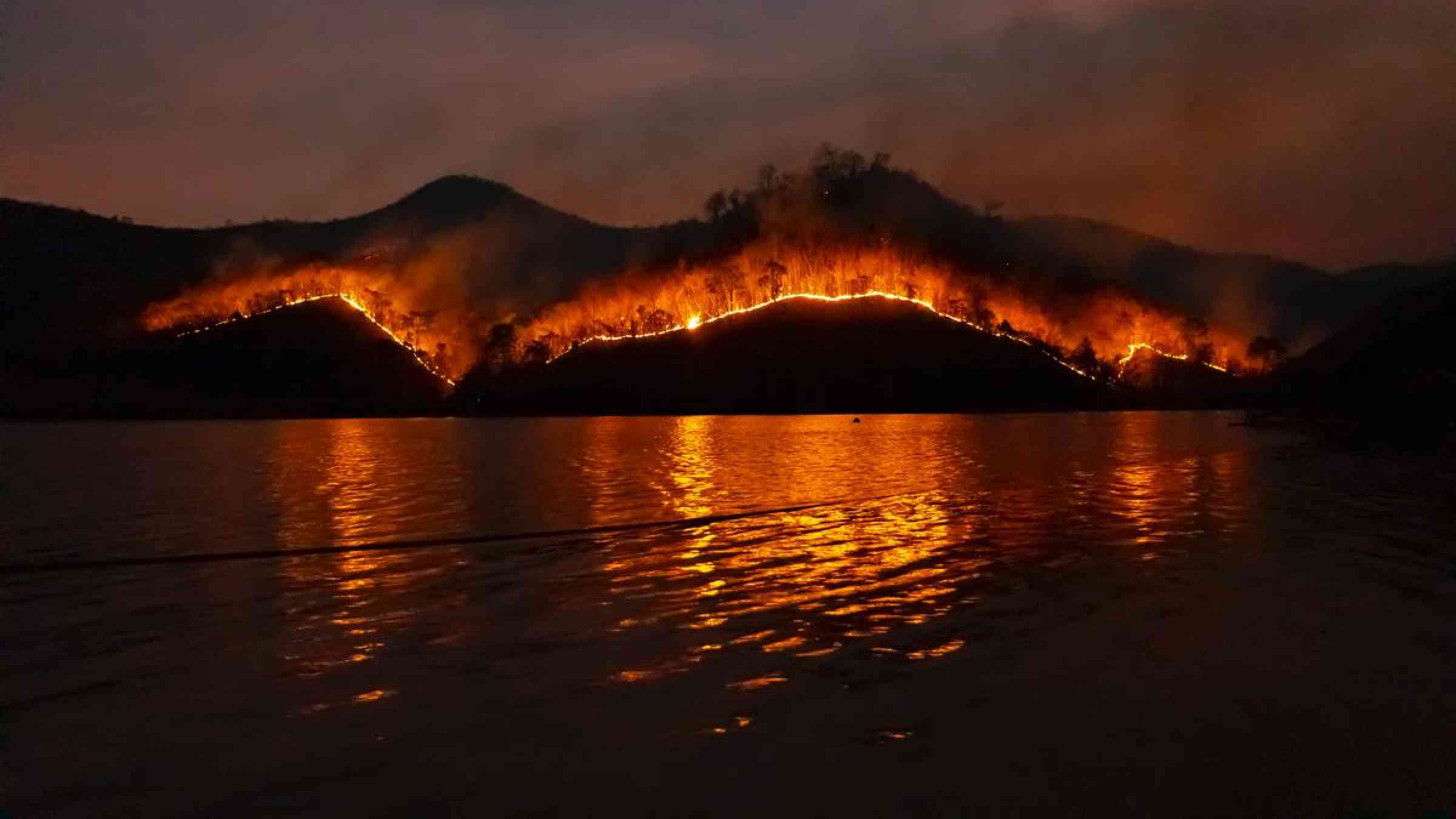What we learned about wildfires in 2023

2023 was a year that was ablaze with wildfires – major fires scorched every continent, choking cities with smoke, laying waste to natural heritage, turning magnificent forests to charred deserts.
The PreventionWeb editors have been reading the smoke signals and sniffing the air for the latest updates and cutting-edge research on dealing with wildfire risks.
Here we offer you some of the key learnings we picked up about wildfires in 2023:
1. Increasingly frequent and severe wildfires could exacerbate climate change and disrupt global climate systems.
“The increasing number of extreme bushfires around the world, as [we saw in 2023] in Canada and Greece and previously during the Australian Black Summer, could exacerbate climate change and further disrupt Earth’s systems, leading to devastating impacts across the globe,” University of New South Wales researchers reported.
“UNSW Canberra Professor of Bushfire Dynamics Jason Sharples said fire thunderstorms, which were prevalent across the 2019-20 fire season, have the potential to significantly disrupt Earth systems, such as the climate.”
2. Fires can change local weather – and forecasts could incorporate these interactions to assist firefighters.
This study’s results seem to be reflected in another research of 2023 which suggests “that smoke from particularly large blazes can change local weather, making fires even worse. This could be bad news for fire-prone regions experiencing more frequent fires due to climate change.”
The same research “also hinted that building fire-weather interactions into weather forecasts could help direct firefighting resources to where they’ll be most effective”.
3. There are serious economic ramifications for industries that rely on forests, such as timber and paper manufacturing.
Wildfires, apart from communities living in the wildland-urban interface, also threaten industries such as timber milling and paper manufacturing.
A team of scientists found that “between 2001 and 2021, up to 25 million hectares of timber-producing forest was severely burned. The extent of fire has jumped markedly in the past decade, from an average of less than one million hectares a year up to 2015 to triple that since then.”
4. Innovative solutions can reduce wildfire risks.
However, it’s not only bad news – new solutions are being developed to mitigate wildfires and reduce their risk.
We know for instance that “agricultural fields are a major source of wildfire, either through the escape of fires lit deliberately for agricultural purposes (stubble burning) or through accidents (ignited from machinery use)”. A team of researchers “found that many common crops and pastures are low in flammability and could be used to redesign agricultural landscapes to help suppress wildfires”.
The researchers realized that “in Brazil, pineapple crops were much better at stopping fires than peanuts or grazing legumes. In Canada, a pasture mix of yarrow, white clover and Rocky Mountain fescue experienced less intense and slower-moving fires than those that burned through nearby grasslands.”
5. Traditional cultural burning practices have long-term benefits – but they need to be adjusted for a changing climate.
A new analysis also revealed that “low-intensity burning, such as controlled or prescribed fires, managed wildfires, and tribal cultural burning, can dramatically reduce the risk of devastating fires for years at a time”.
“To safely carry out controlled burns, firefighters must wait for specific weather conditions: not so damp as to prevent combustion, but not so dry or windy as to burn more vegetation than intended”.
Unfortunately, “climate change is further reducing the overall number of days and changing the times of year when prescribed fires can be safely used”.
Therefore, “Climate change will require the agencies responsible for prescribed burns to adjust” in terms of staff availability and prescribed-burning calendar.
Keep up with the latest wildfire findings
We expect that the wildfire trend will continue into 2024 – and beyond – but we also know that as we learn more about managing risk and building resilience we can make sure that wildfires’ destructive impacts are increasingly reduced.
The PreventionWeb team will continue to collect the latest research and freshest news about wildfires.
You can follow them right here: More PreventionWeb resources on wildfire